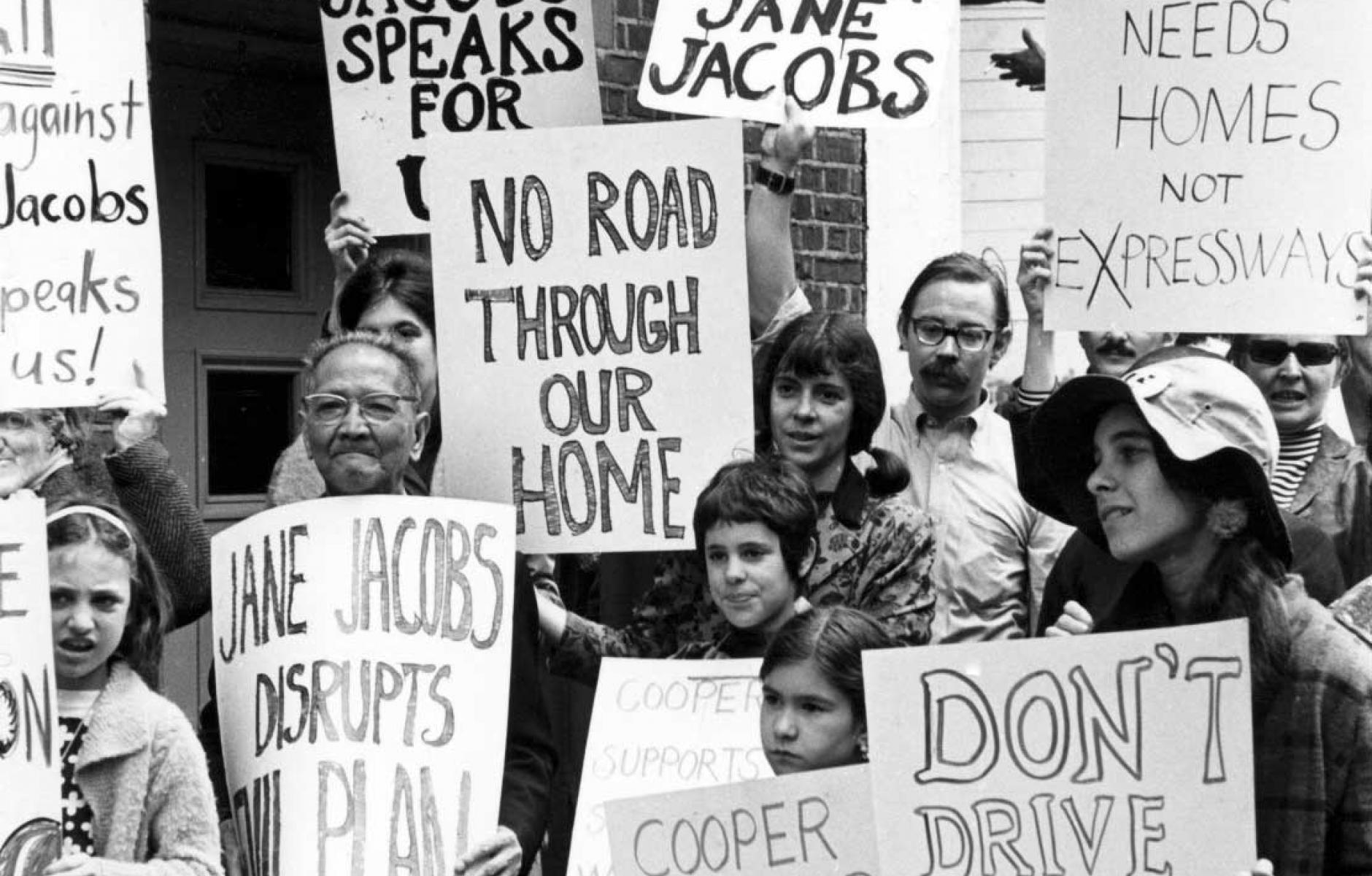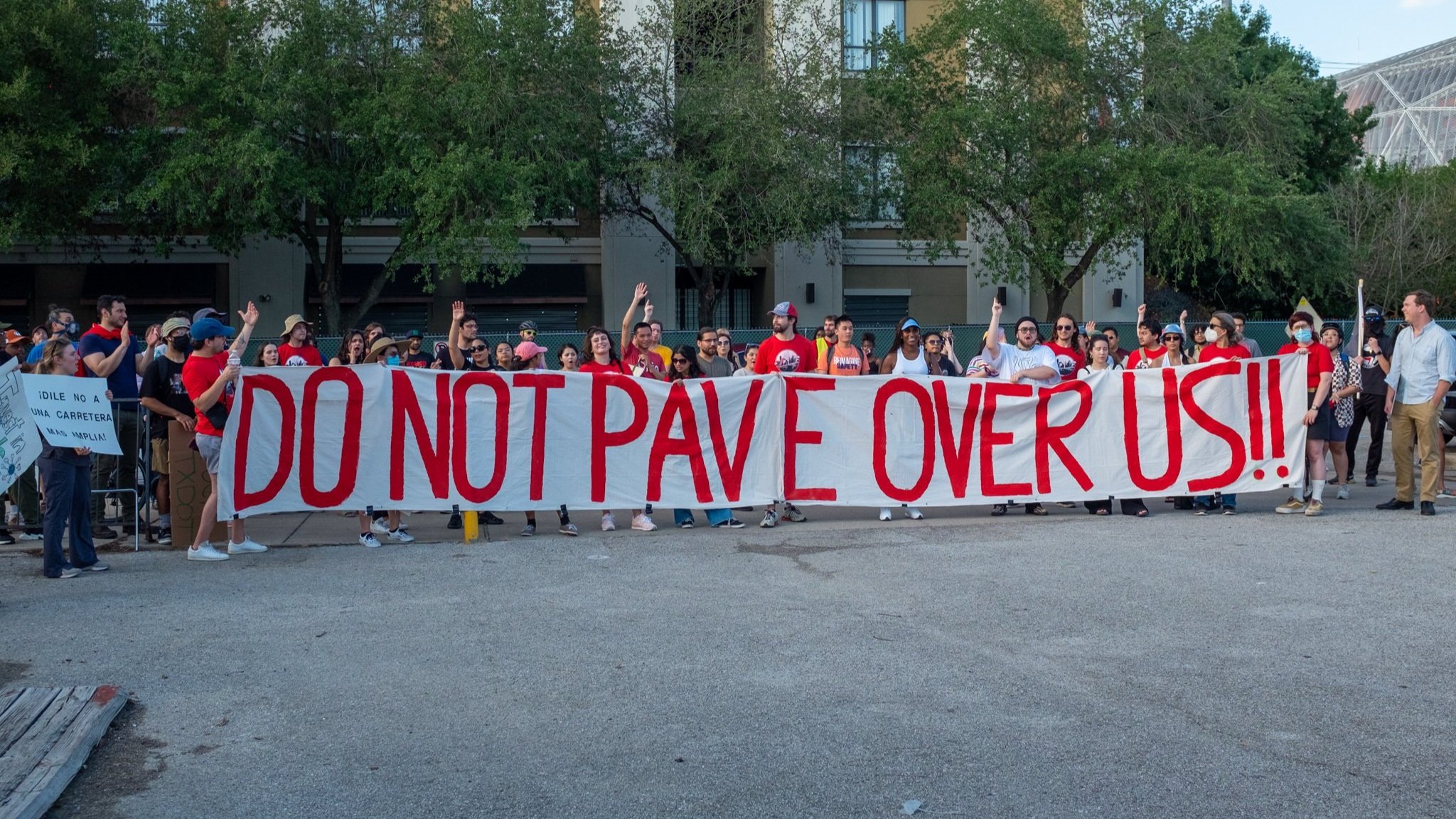‘We Don’t Need These Highways’: Author Megan Kimble on Texas’ Ongoing Freeway Fights
...and what they have to teach other communities across America.
7:50 AM EDT on April 24, 2024
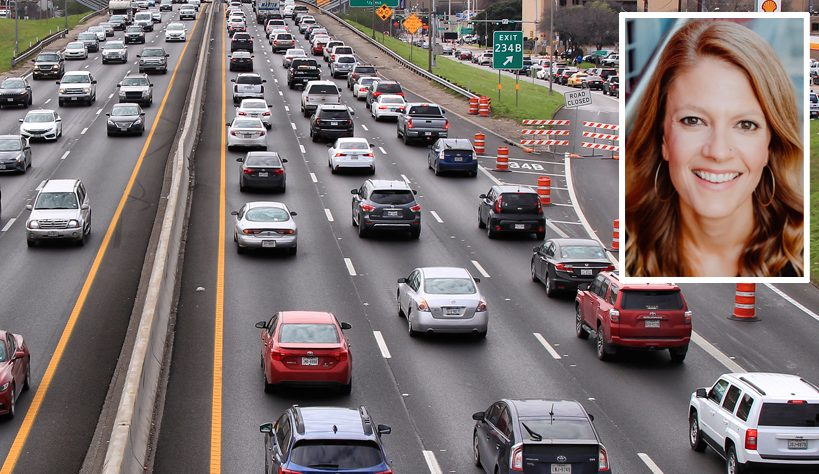
Megan Kimble (inset) discusses why there’s so much traffic in Texas (the capital, Austin, is pictured here).
In cities across America, U.S. advocates are fighting to stop their DOTs from expanding downtown highways and amplifying the mistakes of the past. As the saying goes, though, those battles are always bigger in Texas — and so are the odds that locals face when they try to reimagine their neighborhoods around people rather than cars.
In her gripping new book, "City Limits: Infrastructure, Inequality and the Future of America's Freeways," author Megan Kimble chronicles the ongoing movement to get the Texas Department of Transportation to rethink its destructive plans for three highways in downtown Austin, Dallas and Houston. What could be an unresolved slog through years of pushback against powerful bureaucracies, though, is instead a propulsive, deeply human, and ultimately hopeful story of the people who are leading that fight, even as they stand to lose their homes, businesses, and the very fabric of their neighborhoods. And with any luck, it will inspire future generations of freeway fighters to join their ranks.
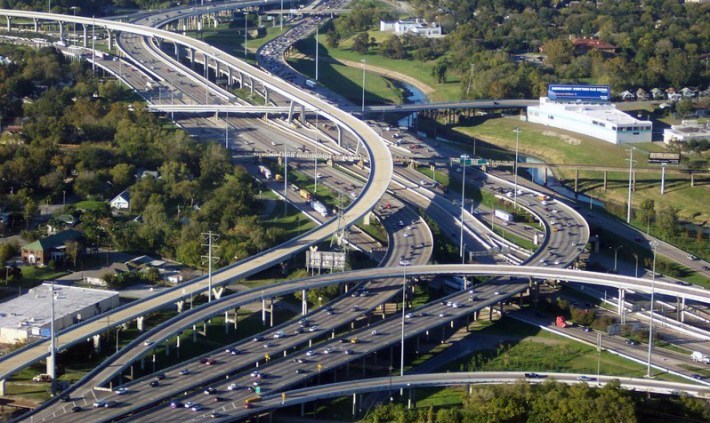
We talked with Kimble about how she tackled that massive project, and what she hopes activists in the Lone Star State can teach the rest of America. The following interview has been edited for clarity and length; an extended version will appear on our podcast soon.
Kea Wilson: Let's start with the elevator pitch. What do you want Streetsblog readers to know about what "City Limits" is about, why it focuses on these three highways in Texas, and what brought you to write it?
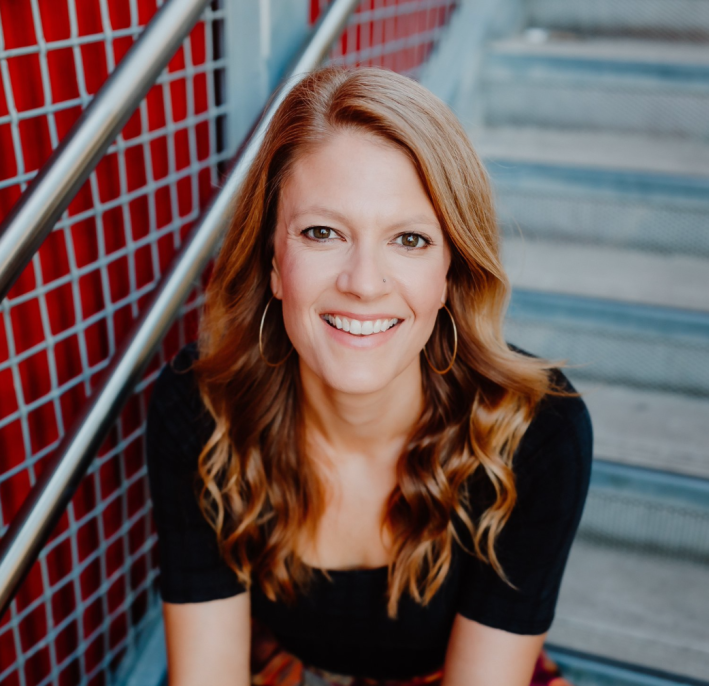
Megan Kimble: "City Limits" is about the history of the interstate highway system, specifically looking at the question of, how did we come to have all these highways routed right through the middle of our cities? ... And the ultimate argument of the book is that we should actually tear down a lot of these urban highways, and put that land and money to more productive use.
As for why I wrote it, I had been covering housing at the Texas Observer where I used to work, and had written a story about land use and sprawl. And then a few months after that story published, the Texas Transportation Commission allocated $4 billion to expand I-35 about a mile from where I live in Austin. To me, those really seemed like the same story: car dependency and sprawl were being enabled by this $4-billion highway.
So as I started researching that, and I learned about this expansion in Houston. It's called the North Houston Highway Improvement Project, [which will expand Interstate 45]. And a few months after I learned about I-45 expansion, I went to Houston and did a walk with community advocates. The footprint of the expansion is massive; it will take out 1,200 homes, 300 businesses, and consume about 430 acres of land. And I was just like really struck by the scale and magnitude of these expansions, both in Austin and Houston; I felt like no one had really looked at the agency driving these expansions, which is to say, the Texas Department of Transportation.
My fundamental question was: If we've known for 70 years that widening urban highways does not fix traffic, why are we still widening urban highways? And that question really drove a lot of the reporting of the book.
Wilson: Tell me a bit about the third major highway project in this book, which our readers may not be as familiar with because it hasn't been in the news as much in recent years. What as your entry point to the I-345 story?
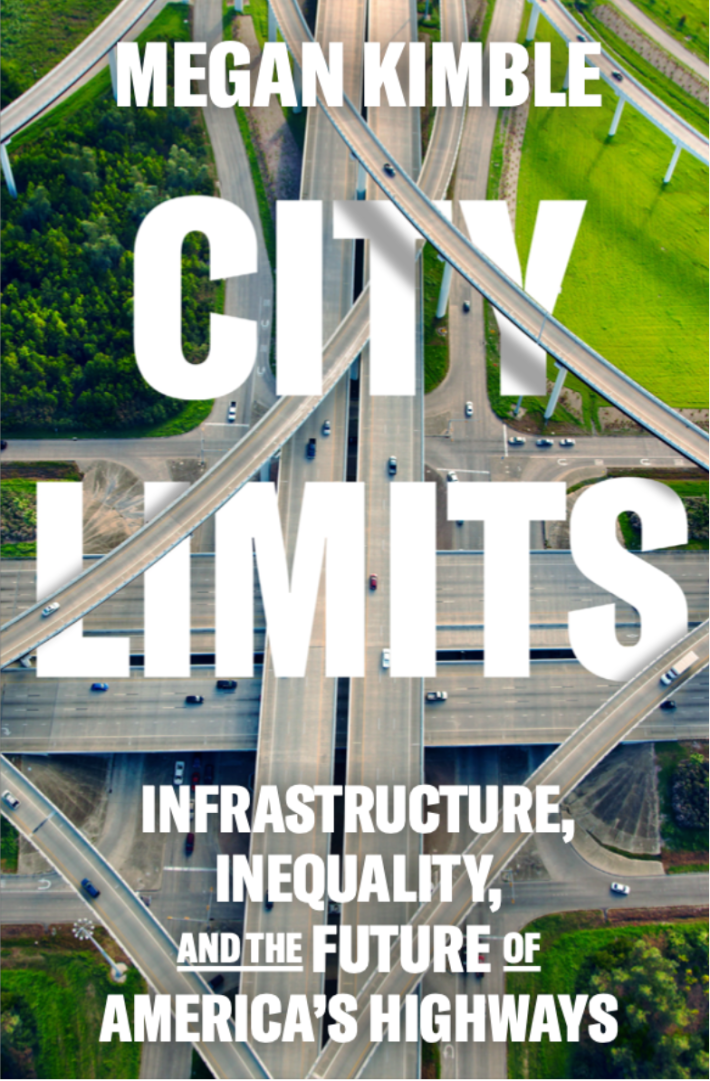
Kimble: So in Dallas, there's an urban planner named Patrick Kennedy. He moved to a Dallas neighborhood called Deep Ellum and started walking downtown to work, which took him under an elevated highway called the I-345. It's this funny, mile-and-a half long interstate [where] all of the land that surrounds it is really depressed; it's surface parking lots and public storage and not very high use of land, right in the middle downtown Dallas. And he asked himself, 'Could this be something better?'
Ultimately, [Kennedy] started a campaign to remove that highway. So he got people in Dallas talking about making a boulevard in its place; he calculated that removing that highway could free up something like 350 acres of land. All that depressed surface parking that surrounds it? You could build housing there; you could build office space, or parks, or whatever the community wants, and put that land back into the property tax rolls of the city of Dallas, which really needs property tax revenue.
So he beat the drum for almost a decade, and a couple of years ago, TxDOT actually studied removing 345 as a formal project alternative. [As far as] I could tell, it was the first time TxDOT had ever studied removing an interstate in a city. and the book chronicles that fight.
Wilson: In addition to documenting the modern freeway fights in these cities, you also delve into freeway fights of the past, and what these neighborhoods were like before the interstates were built. How did you go about conducting that research, and what did you learn when you did?
Kimble: I did do a lot of historical research for this book; I was like very important to me to document what cities looked like before highways were routed through them.
So I spent a lot of time in library archives reading old newspaper coverage, and I think that showed me how these highways were sold, and how they were framed to the public in the 1950s and '60s as a vision of progress. ... [But I was also able to] find other accounts, like, for example, Black-owned newspapers; their coverage of highway construction was very different.
In Dallas, there's a paper called the Dallas Express, which is a Black-owned newspaper. And the Dallas Express went out and talked to people who are being displaced by these highways, like Black families who were given months or weeks to find a new place to live. I think what surprised me in spending so much time in newspaper archives was, how many people didn't want these highways to begin with.
I also went to the National Archives in D.C., and [there's a lot of evidence there that] people were outraged when these highways were built. People wrote letters to their congressional representatives; I found handwritten letters to Lyndon B. Johnson saying, "Please stop this; I'm a fellow Texan, and this highway is going to demolish my home." It was like, "Please, Mr. President, stop this highway." I think that kind of got erased in some ways.
I think that was instructive, because those people knew their cities without highways; they knew what their neighborhoods were like before highways demolished whole city blocks. And I think it was, in some ways, an easier resistance than today, when most of us, myself included, have only ever known cities totally wrapped in highways.
Wilson: That history is really deep and interesting, but so is the present — and it should be mentioned that all three of the highway projects you discuss in this book are ongoing. At one point in the book, you even say that highway expansions are a little like "zombies"; they don't always stay dead. How did you decide when this book was like done enough to print, or when there was enough of a narrative, beginning, middle, and end, when there isn't always a clear resolution?
Kimble: That was the hardest part about this book — just trying to craft a narrative out of projects that are fundamentally static. I mean, there are really robust grassroots fights and organizing efforts against them. But in all three of the projects that I chronicle, nothing actually happened [when I was reporting] The bureaucracy moved forward; environmental impact statements were published; displacements announced. But nothing fundamentally happened.
So for some of my characters — like Modesti Cooper, a Black woman in Houston who will lose her home [to the I-45 expansion] — her situation was the same in 2021 was in 2023. She is still worried about losing her home; she is in limbo. And so the central craft challenge of this book was how do you make a narrative?
Recommended
I mean, frankly, the reason I finally stopped reporting and wrote it is that I had a book deadline, and I wanted to publish it in 2024 while Biden was still in office. So much of this book was catalyzed by the Bipartisan Infrastructure Bill; there's an unprecedented amount of federal money going to highways, and I really wanted the book to like be a part of that conversation. So I had some urgency to like to publish it while these highway fights were still ongoing; maybe it could influence public opinion, maybe it would galvanize people to get involved. I didn't want the book to just an of archive of what happened. I wanted it to be part of the conversation.
But still, I had about two years to report it. And I was lucky that there were like flashpoints [during that time], and things did get resolved. ... [But] I will say that one of the powers of state DOTs is these things are so slow-moving. And I think that one way to counter their powers [is to ask], how do you even tell that story? Because one way they win is through inertia.
Wilson: Just to end us on a little bit of a hopeful note, I would love to hear you talk about what the future could look like if all these freeway fighting movements won; what kind of city would we have if we were less limited by highway projects and these very restrictive, auto-centric ways of thinking? What's what's the vision? And what's the hope?
Kimble: The vision and the argument is that we don't need these highways.
I would love to drive less; a lot of people would love to drive less and be more connected to the places that they live. So I went to Rochester, N.Y., which filled in part of its Inner Loop, and walking around the former footprint of that highway was so inspiring to me. You can forget that it was ever there. There's housing on it; it's a contiguous city grid; people are biking in the bike lane, there's a brewery with people are sitting outside, it's a gorgeous summer evening.
But in a place like Austin, instead there's this massive, polluting scar right through our city. And that's a policy decision; we could tear that down. We could spend money on transit so that I can just hop on a bus us to get where I need to go. I could ride my bike and feel safer, and feel more connected to my city and the people who live in it with me.
So the vision is a place where we're just like not spending so much money on these things. It's not just that they exist and they're bad; it's that in every city in America, we are spending billions of dollars to make the problem worse. Like let's spend that money differently, to build cities that like serve the people who live in them.
Kea Wilson has more than a dozen years experience as a writer telling emotional, urgent and actionable stories that motivate average Americans to get involved in making their cities better places. She is also a novelist, cyclist, and affordable housing advocate. She previously worked at Strong Towns, and currently lives in St. Louis, MO. Kea can be reached at kea@streetsblog.org or on Twitter @streetsblogkea. Please reach out to her with tips and submissions.
Read More:
Stay in touch
Sign up for our free newsletter
More from Streetsblog USA
Are Friday’s Headlines the New Normal?
Transit ridership hasn't come all the way back from the pandemic, and they're going to need more federal help, along with other changes, says Governing magazine.
Friday Video: How to Make Places Safe For Non-Drivers After Dark
A top Paris pedestrian planner, a leading GIS professional, and Streetsblog's own Kea Wilson weigh in on the roots of America's nighttime road safety crisis, and the strategies that can help end it.
OPINION: Congestion Pricing Will Help My Family Get Around As We Navigate Cancer Treatment
My partner was recently diagnosed with cancer. Congestion pricing will make getting her to treatment faster and easier.
Talking Headways Podcast: Money is a Lot of Different Things
It's Part II of our discussion with Jim Kumon!
If Thursday’s Headlines Build It, They Will Come
Why can the U.S. quickly rebuild a bridge for cars, but not do the same for transit? It comes down to political will and a reliance on consultants.
